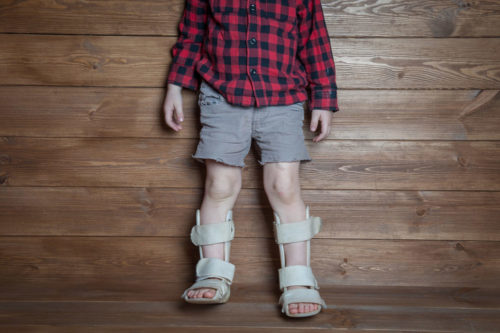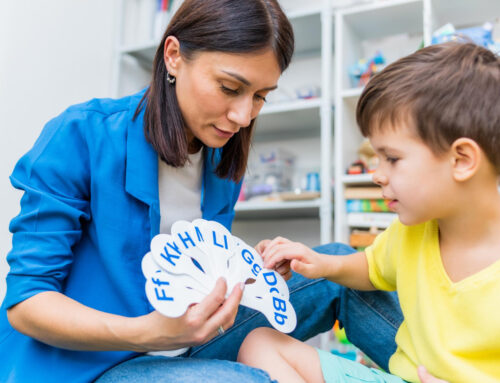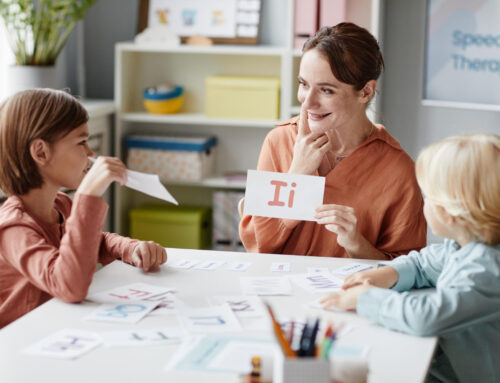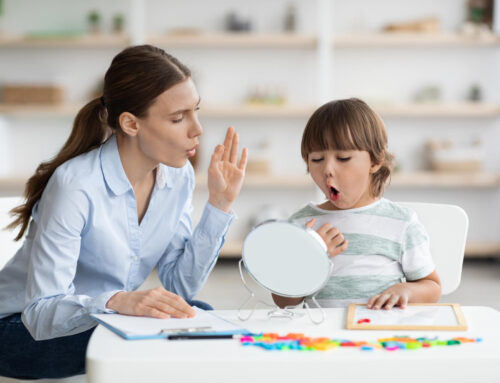
Orthotics are a common part of the world of pediatric musculoskeletal and neuromuscular disorders. Orthotics can help increase functional mobility for a child by providing added support and placing the leg, ankle, and foot in an optimum position for walking. The abbreviations, choices, and rationale can often become very overwhelming for parents. However, by understanding why your child needs a certain type of orthotic, and how it will benefit them, you will set the stage for a smoother, more successful transition into your child wearing orthotics.
Why are Orthotics Used?
Orthotics are a useful tool in successfully increasing a child’s functional mobility. When a child has a physical impairment, there are parts of their body that do not function like they should. Orthotics can help compensate for muscles and structural deficits and help the child reach their highest functional potential.
Orthotics can also be very beneficial to decrease pain. Often times, structural deficits, muscle weakness, and joint contractures can cause significant pain with standing and walking. By using orthotics, joints can be provided with additional stability and structural deficits can be compensated for, thus reducing pain.
Common impairments that often benefit from orthotics include:
- Cerebral Palsy
- Spina Bifida
- Leg Length Discrepancy
- Muscular Dystrophy
- Tight Heel Cords
- Arthritis
- Scoliosis
- Joint Contractures
Types of Lower Extremity Orthotics
Being hit with all the abbreviations can be overwhelming. What exactly does AFO stand for? Why does my child need that particular orthotic? Here is a quick breakdown of some of the most common types of orthotics:
- Ankle-Foot Orthotic (AFO): AFOs are very commonly used in children who have foot drop or tightness that prevents them from flexing the foot up. Being able to dorsiflex the foot is a critical component of a normal gait pattern. AFOs can help children who otherwise do not have the active flexion at the ankle achieve regular gait patterns.
- Supramalleolar Orthotic (SMO): SMOs are used often in young children with instability at the ankle. SMOs provide stability at the foot while allowing for freedom of plantarflexion and dorsiflexion at the ankle which is needed for early motor skills such as crawling and pulling to stand.
- Knee-Ankle Orthotic (KAFO): KAFOs help to stabilize at the knee, ankle and foot and are useful for children who have limited control below the hip. KAFOs often have mechanical or electrically controlled hinges.
- Hip-Knee-Ankle-Foot Orthotic (HKAFO): HKAFOs use hip bands to stabilize the hip and leg while maintaining a central knee position.
What if My Child Hates Their Orthotic?
Unfortunately, some children are not fans of their orthotics. It can be difficult to get them to wear them. The great news is, there are few tricks parents can use to increase compliance with orthotic use.
- Make them fun! Excite your child by allowing them to help choose colors and designs when possible. Let your child pick out a fun new pair of shoes that accommodate the orthotic.
- Check for a correct fit. If an orthotic does not fit properly or has been outgrown, they can be very uncomfortable and painful for a child. Making sure the orthotic fits correctly is crucial.
- Set up a schedule. Work with your therapist or orthotist to set-up a wear schedule for your child’s orthotic. By gradually introducing orthotics, you can decrease any discomfort that can happen initially as your child’s body adjusts to the new position. Reward your child with sticker charts or special treats for following their schedule.
While orthotics can be overwhelming, there are plenty of resources available to help parents and children. If you have questions about your child’s orthotics, a physical or occupational therapist can provide you with guidance and resources.





